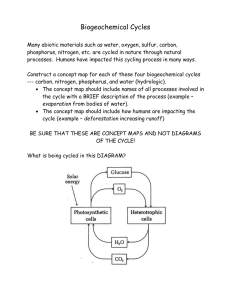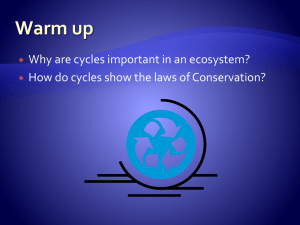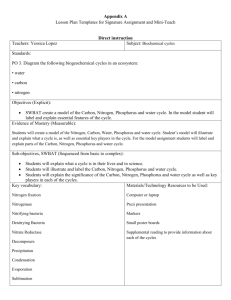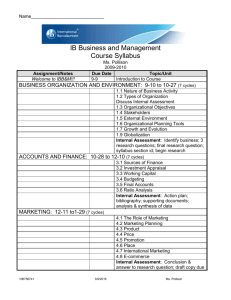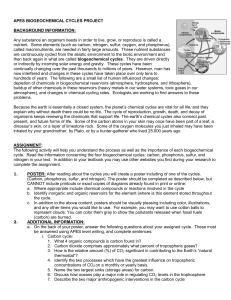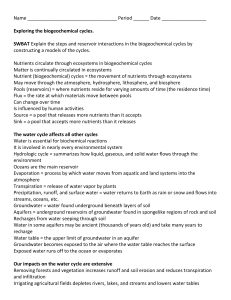Cycles Study Guide 1. State the Law of Conservation of Matter?
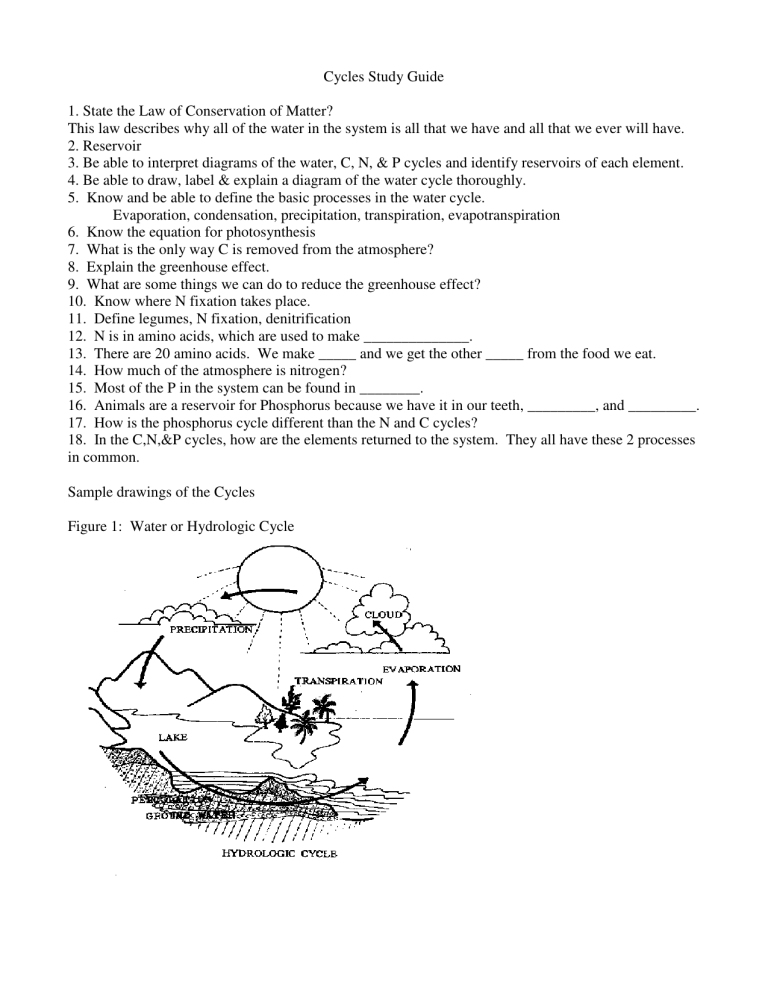
Cycles Study Guide
1. State the Law of Conservation of Matter?
This law describes why all of the water in the system is all that we have and all that we ever will have.
2. Reservoir
3. Be able to interpret diagrams of the water, C, N, & P cycles and identify reservoirs of each element.
4. Be able to draw, label & explain a diagram of the water cycle thoroughly.
5. Know and be able to define the basic processes in the water cycle.
Evaporation, condensation, precipitation, transpiration, evapotranspiration
6. Know the equation for photosynthesis
7. What is the only way C is removed from the atmosphere?
8. Explain the greenhouse effect.
9. What are some things we can do to reduce the greenhouse effect?
10. Know where N fixation takes place.
11. Define legumes, N fixation, denitrification
12. N is in amino acids, which are used to make ______________.
13. There are 20 amino acids. We make _____ and we get the other _____ from the food we eat.
14. How much of the atmosphere is nitrogen?
15. Most of the P in the system can be found in ________.
16. Animals are a reservoir for Phosphorus because we have it in our teeth, _________, and _________.
17. How is the phosphorus cycle different than the N and C cycles?
18. In the C,N,&P cycles, how are the elements returned to the system. They all have these 2 processes in common.
Sample drawings of the Cycles
Figure 1: Water or Hydrologic Cycle
Figure 2: Carbon Cycle
Figure 3: Nitrogen Cycle
Figure 4: P cycle
